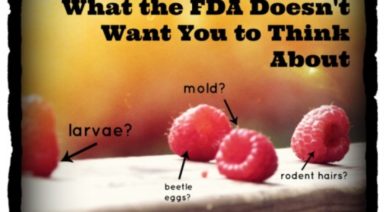Antibiotic Resistance is Becoming a Major Threat to Humanity

As humans, we face a number of threats from the environment, but none may loom larger than the one posed by antibiotic resistance. Through our over prescription, poor regulation, agricultural abuse, and weak supply chains, a hyper-resistant bacteria is just around the corner. And unless we do something to change the tide, we may be looking at a pandemic of mass proportion.
Human presence on earth is a blip on the timeline compared to bacteria. And bacteria are pervasive; on our clothes, in our bodies, in dirt, and on the surface of pretty much everything – in fact, all of the bacteria on Earth, despite its microscopic size, would outweigh us 100 million times.
In the 3.5 billion years bacteria have lived on Earth, it has survived interminable challenges to its existence, which has only given it time to continuously adapt and outlast every other lifeform. Not to mention the fact that bacteria can reproduce 500,000 times faster than we can, with certain strains giving rise to a billion offspring within several hours.
Now that we’ve made it our mission to maintain sterile environments and avoid illness, we’ve been combating bacteria with chemicals and antibiotics every chance we get. Antimicrobials are used in everything from hand soap, to skin wipes, to yoga mats and kitchen towels, creating what can only be described as a Darwinian battleground, where only the strongest bacteria survive.
The Overuse of Antibiotics
Antibiotics were discovered during WWII, and prior to it’s discovery thousands of soldiers died from infection. When it became evident that antibiotics could easily cure bacterial disease, they became an instant panacea. But they weren’t used with a calculated strategy. Instead they were given as prophylactics, starting a dangerous trend of over-prescription.
Soon, the miracle drug known as penicillin was being prescribed by every doctor, whether there were only marginal chances an illness was caused by bacteria or not. And today that practice continues as doctors, who treat individuals, not society at large, would rather take the risk of over prescribing than having a patient get ill. It’s estimated that a third of all antibiotics are prescribed inappropriately, either when no bacterial infection is present, or the wrong antibiotic is recommended.
In 1945, the founder of penicillin, Alexander Fleming, warned the New York Times that doctors over prescribing the drug posed a serious threat to its efficacy. Though it wasn’t until the 70s that the FDA realized the potential fallout of antibiotic resistance.
By this point antibiotics were being used not just for humans, but almost universally for livestock as well. Farmers found they could raise animals in smaller, dirtier conditions if they staved off illness by incorporating antibiotics into their diet. And for some reason, still unknown to this day, a diet supplemented with antibiotics allows animals to grow slightly faster, producing more meat and subsequently more profit.
Today approximately 80 percent of all antibiotics in the U.S. are given to livestock, with the majority administered to healthy animals. This has created a vicious cycle in which farmers rely on the use of antibiotics to earn thin profit margins that would be eliminated if laws were enacted to restrict their use. Meanwhile, we’re eating the meat of these animals pumped with antibiotics, causing unknown health effects to us, while simultaneously promoting the growth of resistant bacterial strains.
Watch a trailer for the documentary, Resistance:
Antibiotic Resistance Causes: A Lack of Regulation
According to a 2016 World Economic Forum study, around 700,000 people die annually from antimicrobial resistance. That death toll will reach a total of 10 million by the year 2050.
So, why has the use of antibiotics been unregulated for so long? One answer is the rise in confinement agriculture, which put small farmers out of business and corporate agriculture at the forefront of meat production.
By the time the FDA realized the impending threat posed by antibiotic resistance and abuse, its widespread use was already ingrained in farming practices. The FDA proposed a ban for the use of antibiotics in animal feed by 1973, though it never came to fruition. Since then, the drug’s use has continually increased. The FDA merely provided recommendations to farmers to curtail the use of antibiotics, rather than getting legislation passed to mandate it.
So, who is preventing such legislation from being passed? Lobbyists from many industries, including big ag, pharmaceutical companies, and fast food chains relying on large quantities of cheap meat.
Today, there are nine billion animals raised for meat in the U.S. annually, with 90 percent of those animals raised in concentrated animal feeding operations, or CAFOs. These CAFOs, that contribute to a number of public health problems, are often owned by large corporations that pack as many animals into their enclosures as possible, barely maintaining their health with antibiotics.
Since the 1980s, mega-farms have overtaken markets, putting 85 percent of small farmers out of business. They began producing more meat at a faster rate, driving the market price of an animal down, sometimes by more than half. Now that this has become common practice, farmers fear they can’t afford to take a step back and revert to pre-antibiotic farming practices.

Misuse, Overuse and Refuse
The U.S. healthcare system is flawed, causing many to resort to desperate tactics when in need of medicine. While antibiotics aren’t necessarily expensive compared to other drugs, a trip to the doctor can cost the uninsured hundreds of dollars. To avoid this, people take matters into their own hands to save a buck, contributing to a greater problem and also putting them in a dangerous position.
On the extreme end, people have begun using over-the-counter animal antibiotics from pet stores to treat bacterial issues ranging from infections from wisdom teeth extraction to bronchitis. On the less extreme end, people often save unfinished antibiotics for future illness.
There’s debate as to whether patients should finish a prescription or stop once they start feeling better, but typically the dosage and type of antibiotic are tailored to a specific infection. There are also different strengths of antibiotics that have slowly become ineffective as bacteria have grown resistant. And not finishing a prescription can leave bacteria in your body that can grow stronger.
But even if we take proper dosages and get prescriptions from a doctor, there’s still the problem of waste and antibiotics seeping into the environment from a multitude of sources. Pharmaceutical pollution creates a fecund environment for antimicrobial resistance, and recent events have only perpetuated this.
A few years ago, there was an explosion at a Chinese factory that produced antibiotic precursors. This undoubtedly lead to more pollution, but it also lead to a major gap in the global antibiotic supply chain that relied on a tenuous supply of the drugs. This shortage, particularly of one antibiotic that prevents the spread of syphilis from mother to child, can exacerbate antimicrobial resistance while allowing the spread of disease.
Now that bacteria are evolving to quickly become drug resistant, pharmaceutical companies and their investors have no incentive to finance research into new antibiotics that could become useless within five years. When it costs a billion dollars to bring a new drug to market, there’s no chance our capitalist model will produce them at a loss.
What can we do before it’s too late? Awareness and pressure on the government to pass legislation limiting antibiotic use is key. While it seems hopeful at best, raising awareness can lead to a greater number of people observing best practices that limit resistance.
Pressuring governments, organizations, and private companies to enact policies can lead to change too. Encouraging doctors to prescribe fewer antibiotics, while consuming fewer ourselves, especially those from alternative sources, can slow the process of resistance.
Currently, one company, CARB-X, is working to speed up the development of new drugs that most big pharmaceutical companies won’t consider. The company’s funding is a mix of private and public partners working to find solutions to antimicrobial resistance.
In the E.U., the use of antibiotics in agriculture has been banned, and though there has been a slight decrease in animal growth and a slight increase in animal mortality, overall meat production is higher than when antibiotics were used.
If they can do it, so can the U.S. And though it may seem like something beyond individual control, it can be possible to collectively enact change by starting at the individual level.
Biotech Company To Send Woman to Space to Birth First E.T. Baby

There’s a long list of activities expecting mothers are typically told to avoid and often they’re pretty mundane; prolonged physical activity, amusement park rides, and getting a tattoo. Not included on this list – because any sane human would consider it to be pretty much implied – is space flight. But now a biotech company called SpaceLife Origin, wants one lucky lady to cast those overly cautious maternal instincts aside and take a trip into the exosphere, so she can give birth to the first (technically) extraterrestrial child.
SpaceLife Origin is founded on the premise that humans are getting close to colonizing other planets and that Earth is becoming an increasingly hostile environment, due to climate change and other unnamed threats. Accordingly, its founders set up a series of missions that involve launching the precursors of life into space over the next few years, and eventually launching a pregnant woman into space to give birth by 2024.
Their first launch, planned for 2020 and titled Mission Ark, is being marketed as mankind’s ultimate insurance policy, offering individuals the ability to store their “Seeds-of-Life” in a satellite hovering in low-earth orbit for the next several decades. Those with the means to afford it can buy themselves piece of mind, knowing their potential progeny will be stored safely off-planet, impervious to any anthropogenic or natural disasters down here amongst us plebeians.
Their second project, set to launch in 2021 and titled Mission Lotus, involves the first attempt to conceive a human being in space – though not by traditional means. Human egg and sperm cells will be launched up to a space station, where they will be used to artificially create an embryo that will mature for a few days, before being returned to Earth, where gestation will continue inside the mother. Nine months later, she will give birth to the first child conceived off planet.
Finally, Mission Cradle hopes to enact the first birth of a human being in space, technically creating the first “extraterrestrial” baby ever. But how would they get a pregnant woman into space without the G-forces, radiation, and other extreme conditions affecting her unborn child? And what about the trip back? All great questions.
SpaceLife says it’s possible though, and that it’s necessary for us to learn the technical aspects of this process if we ever want to colonize distant planets.
“It’s a small step for a baby, but a giant baby-step for mankind,” said Dr. Egbert Edelbroek, SpaceLife Origins Chief Strategy & Innovation Officer.
It’s hard to tell if the company has achieved the necessary funding, partnerships with space agencies, or humans willing to donate their seeds, but if we had to guess, the latter part of that equation is likely the easiest box to check.
SpaceLife’s website includes a promotional video that shows the evolution of mankind’s achievements in a quick montage of stock images, followed by a video of Elon Musk speaking at a SpaceX event. It’s unclear whether the company is actually in talks with Musk, but it’s obvious they’re at least trying to give him a nudge to recognize their lofty plan.
Unsurprisingly, the tentative space nation Asgardia, has expressed its support of SpaceLife’s plan, as it too, hopes to pioneer a number of firsts in space, including a space station that would support an entire nation. But as idealistic and romantic as this all sounds, it always leads one to wonder whether these futurists have the interests of the people in mind, or whether they’re only considering the upper echelon of society.
For more on the potential existence of an elite plan to covertly colonize our solar system, watch this episode of Deep Space:




































